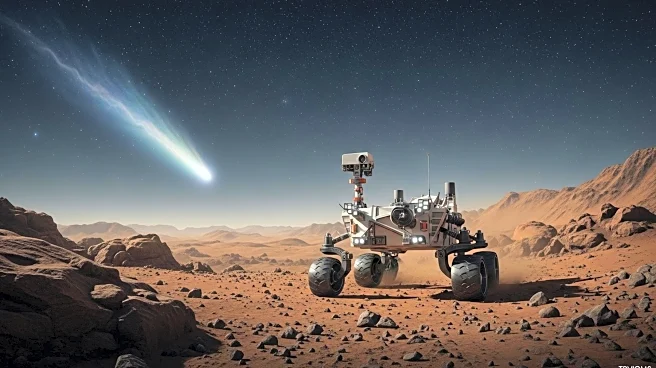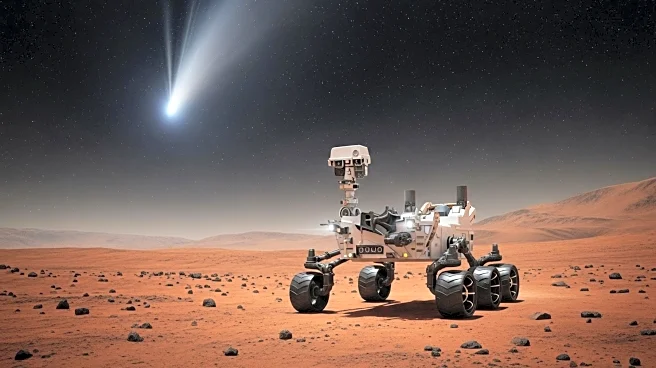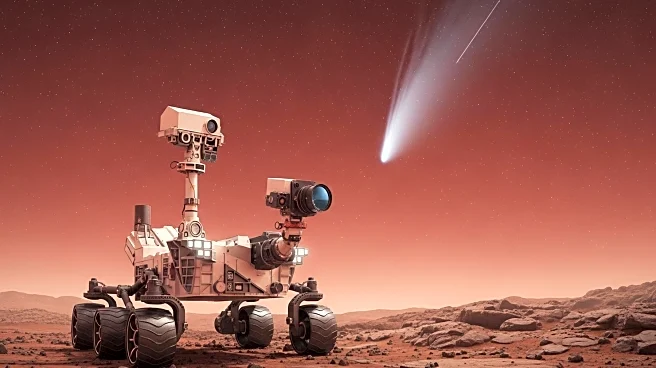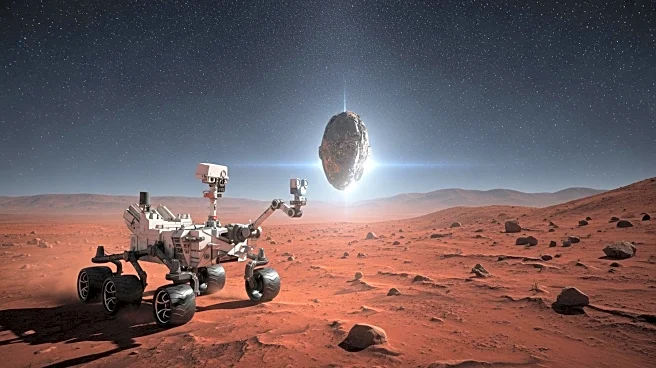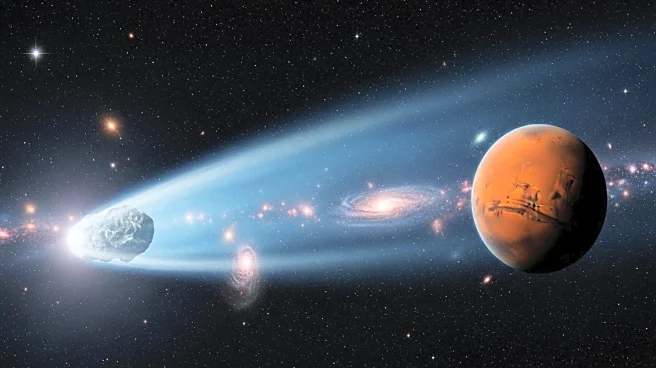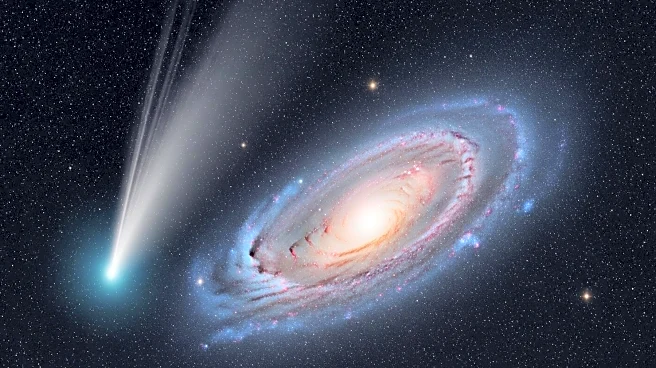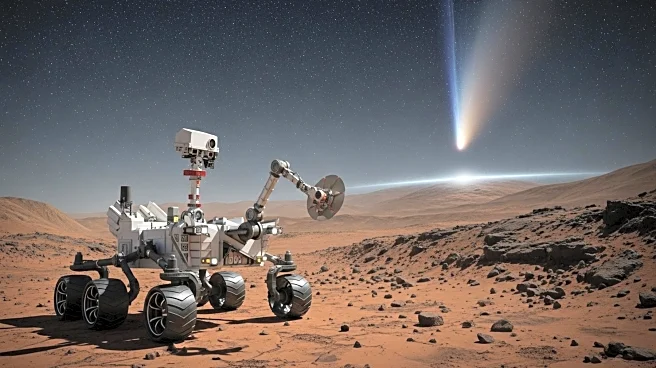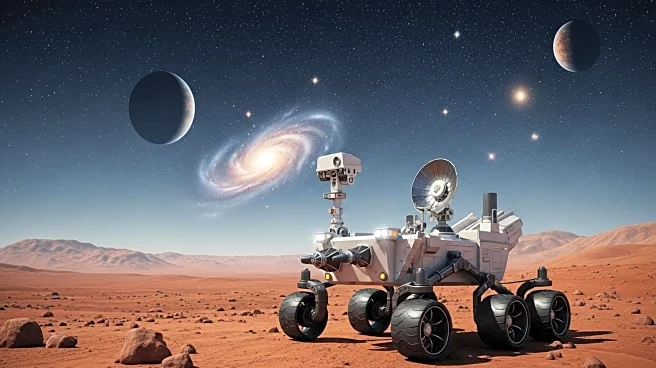What's Happening?
The European Space Agency has released images of a rare interstellar comet, known as 3I/ATLAS, as it closely approached Mars. This comet is only the third of its kind confirmed to enter our solar system. The images, taken by two Mars orbiters, show the comet as a bright, fuzzy white dot moving against a backdrop of distant stars. The comet was approximately 18,641,135 miles away from Mars at the time of observation. NASA has confirmed that the comet poses no threat to Earth. Since its discovery in July, 3I/ATLAS has been photographed multiple times, including images captured by the Hubble Space Telescope from about 277 million miles away. The comet is expected to make its closest approach to the sun in late October, passing between the orbits of Mars and Earth.
Why It's Important?
The observation of interstellar comets like 3I/ATLAS provides valuable insights into the composition and behavior of celestial objects originating from outside our solar system. These comets are rare, with only two others confirmed: 1I/'Oumuamua in 2017 and 2I/Borisov in 2019. Studying such comets can enhance our understanding of the universe and the processes that govern the movement of objects across vast distances. The data collected from these observations can contribute to scientific knowledge about the formation and evolution of solar systems, potentially impacting future space exploration missions and technologies.
What's Next?
Scientists from the European Space Agency will continue to analyze data from the Mars orbiters, combining multiple images from Mars Express to detect the faint comet. The comet is expected to remain visible through September before moving too close to the sun to observe. It will reappear on the opposite side in early December. Continued observation and analysis will help astronomers gather more information about the comet's trajectory and characteristics, contributing to ongoing research in astrophysics and space exploration.
Beyond the Headlines
The discovery and study of interstellar comets like 3I/ATLAS raise questions about the origins and pathways of such objects. These comets may carry materials from other star systems, offering clues about the diversity and complexity of the universe. The ethical and philosophical implications of understanding our place in the cosmos are profound, as these discoveries challenge our perceptions of the universe and our role within it.

